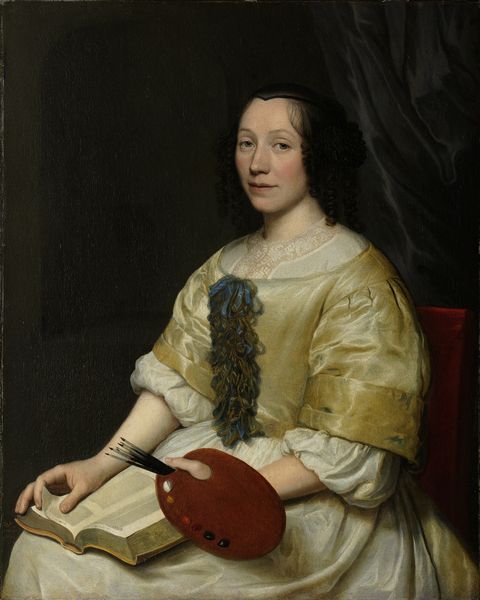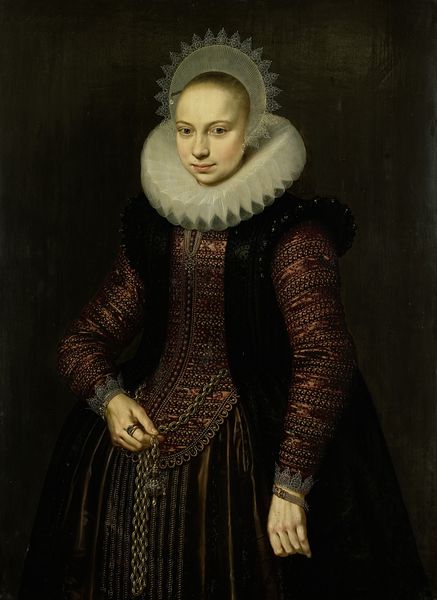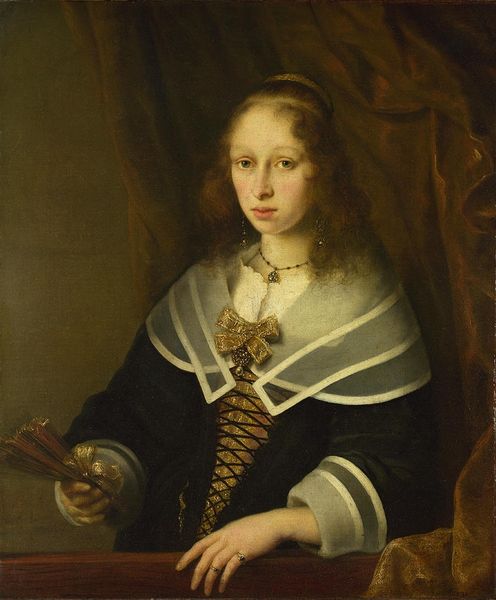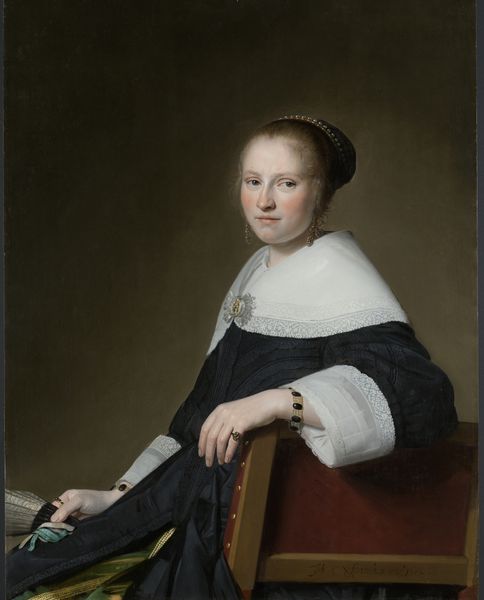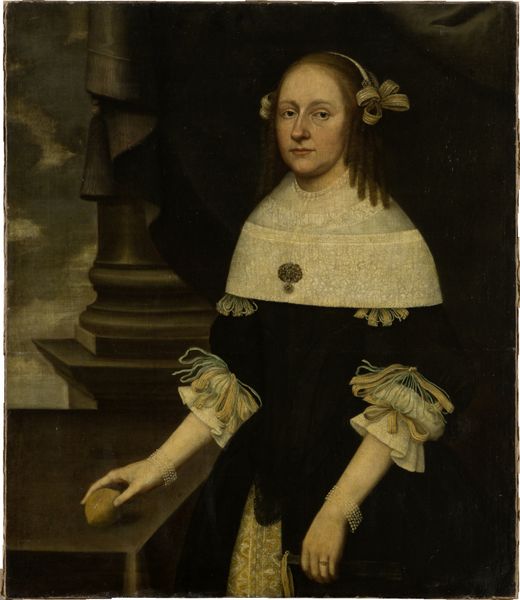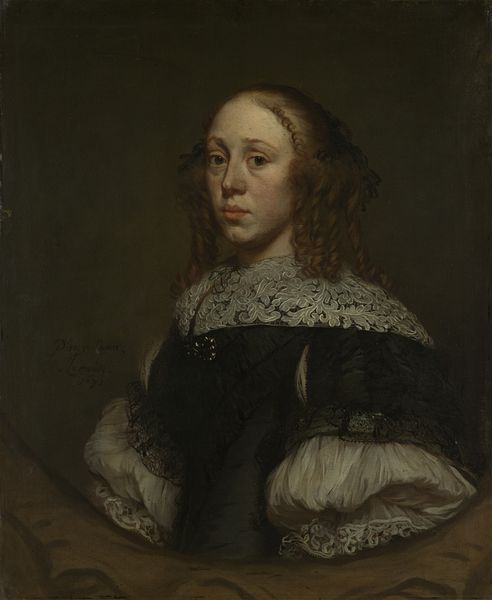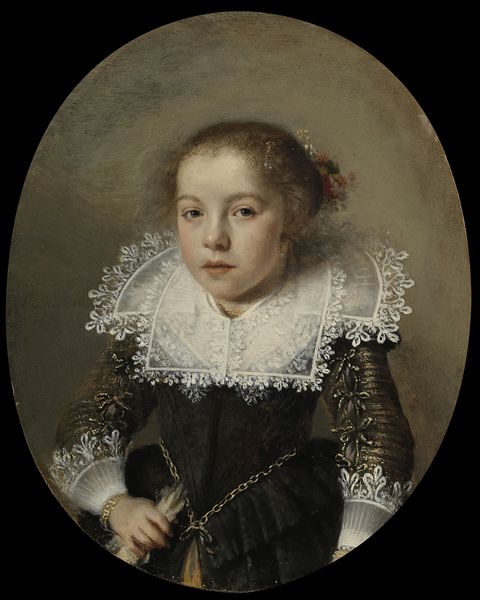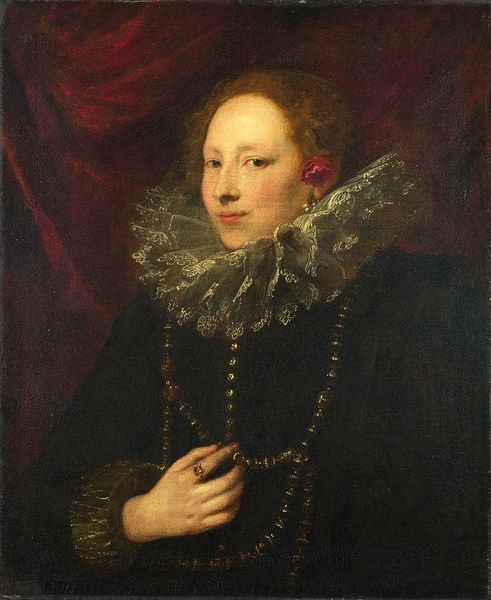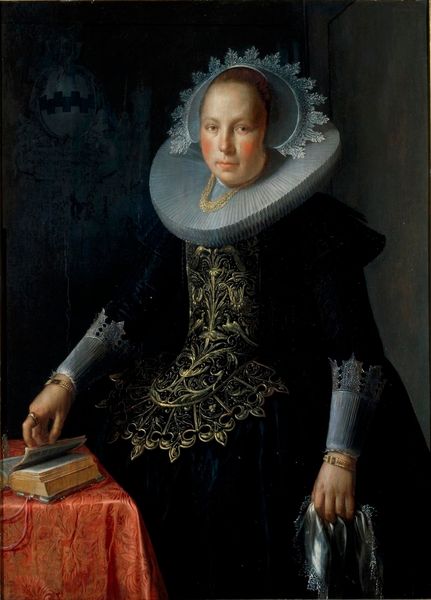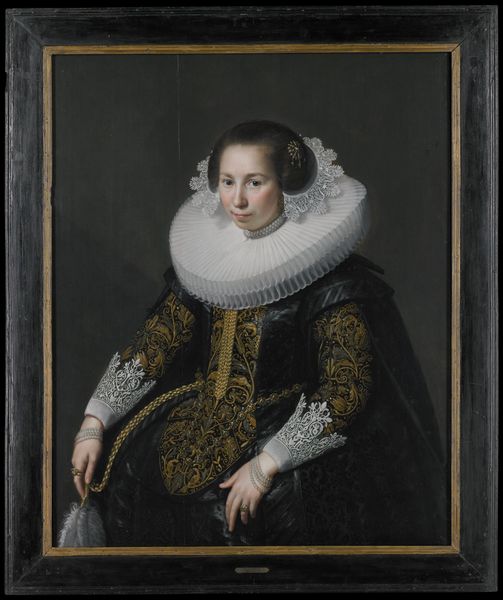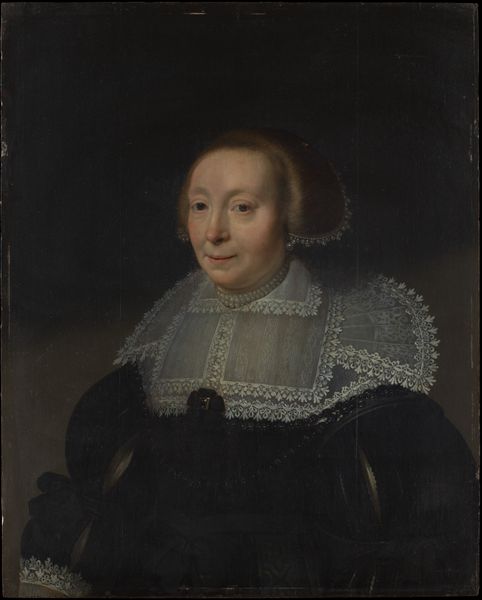
painting, oil-paint
#
portrait
#
baroque
#
dutch-golden-age
#
painting
#
oil-paint
#
genre-painting
Dimensions: 78.6 cm (height) x 67.8 cm (width) (Netto)
Who was Willem Drost? Why do we know so little about this skilled painter? 🤔 Willem Drost (c.1633-1659) was a Dutch Golden Age painter who specialised in portraits and history paintings. Yet until recent years, very few of his paintings were actually attributed to him! This oil on canvas painting, 'Young Woman with a Carnation' (1656) was previously attributed to none other than Rembrandt (1606-1669). It was even displayed in the centre of the Rembrandt Room at the National Gallery of Denmark! And it's easy to see why art historians made this mistake. The painting is filled with hallmarks of the Dutch Old Master. 'Young Woman with a Carnation' makes use of Rembrandt's signature chiaroscuro (light/shadow) technique, whereby the woman's face is illuminated against the gloomy background. The level of psychological depth and nuanced emotion captured in the woman's expression also points towards Rembrandt's style. 🖌️ In actual fact, Drost was one of Rembrandt's most remarkable students. They worked closely in Rembrandt's studio, and it seemed inevitable that Drost would go on to have a spectacularly successful career. However, Drost died at the age of just 26 before achieving popular recognition. 😔 The false attribution of 'Young Woman with a Carnation' speaks to Drost's comparable skill. It was perhaps intended as an engagement portrait; the carnation flower gently held by the sitter is a 17th century symbol of devotion and promise. She wears a black dress with a simple square neckline, revealing a white lace collar. Her drop earrings sparkle slightly in the light. 💡
Comments
statensmuseumforkunst almost 2 years ago
⋮
For many years this portrait has been part of the heart of the group of Rembrandt paintings at the National Gallery of Denmark. However, the picture’s authenticity has been challenged over the last decades, meaning that it should now be attributed to one of Rembrandt’s late students, probably Willem Drost. Inspired by Rembrandt The way the woman is depicted is very much inspired by Rembrandt, a "portrayer of the soul", as is evident in the model’s calm and gently introvert expression that speaks of quiet contemplation. These features in particular place the picture so close to Rembrandt’s style that we must assume it was done under his supervision while Drost was still a student in his workshop. The young woman We do not know who the young woman is, but the dress with its square neckline, the blouse, and the elaborate headdress all belong to the early 16th century. Thus, it is difficult to determine whether this is a staged period portrait or a so-called "tronie", a kind of anonymous presentation of characters popular in 17th century Holland. The carnation in the woman’s hand is associated with engagement and marriage symbolism that was widespread in the 16th century, appearing in several female portraits from the time.
Join the conversation
Join millions of artists and users on Artera today and experience the ultimate creative platform.


